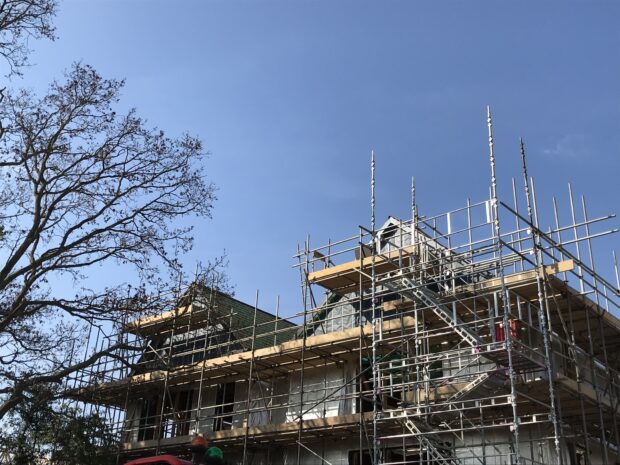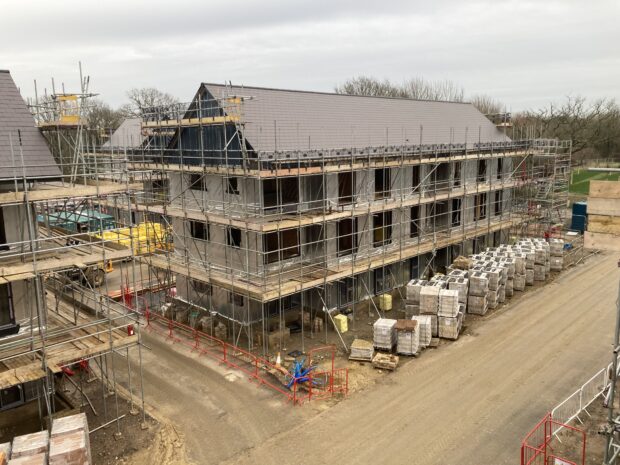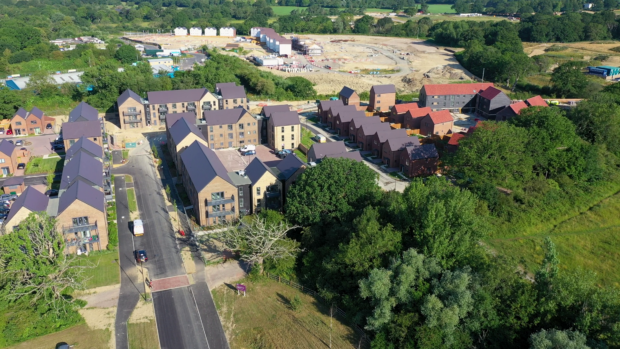In this blog, we explore what biodiversity net gain means to some of our stakeholders and how they overcome issues they encounter. Lisa Palframan – Senior Technical Manager with Homes England (HE) explains how HE are building experience in delivering BNG through their schemes.

As the Government’s housing and regeneration agency, our role is to support the delivery of quality housing and placemaking, help create jobs and drive local economic growth. Our Strategic Plan has a strong focus on ensuring the environmental impact of the new homes we support is minimised and their contribution to the natural environment is maximised. We’re achieving this by planning and delivering biodiversity net gain (BNG). BNG is an approach that leaves more nature after development than before and where possible, on the same site.
Our BNG experience
We see BNG as an opportunity to create and enhance habitats for wildlife. At the same time ensure communities can enjoy natural, high quality green spaces. The People and Nature survey found 94% of adults who visited a green and natural space felt spending time outdoors was good for their physical health. 92% felt it was good for their mental health.
BNG helps achieve the Building for a Healthy Life standard. This standard is a tool that we use to drive up design quality. Nature is integral to its criteria, it promotes:
- safeguarding existing natural connections such as hedgerows,
- the creation of a strong landscape strategy, providing opportunities to reintroduce lost habitats and species.
Brownfield sites like former airfields support extensive areas of ‘medium distinctiveness’ grassland habitats – which are important for wildlife. Historically, habitats like these received little protection in the planning system. However, the Biodiversity Metric gives them a relatively high value, increasing the site baseline score.

We use the Mitigation Hierarchy to avoid impacts on valuable habitats as far as possible, this is more challenging where the habitats cover much of the site which can make achieving BNG more challenging.
We’ve experienced some practical challenges. Many schemes we are currently taking through planning were acquired prior to consideration of BNG obligations.
How we are delivering BNG
We’ve already started building up our experience in delivering BNG through several schemes in England before BNG is expected to become mandatory.
On Brookleigh in West Sussex, HE are delivering 3,500 homes along with an outdoor sports centre, 12ha of public parks and an extension to Bedelands nature reserve. The scheme is predicted to deliver 23% biodiversity net gain, with 45% of the site being maintained as open space which incorporates significant areas of biodiverse planting.
It's difficult to ‘retrofit’ BNG after a planning application is submitted, such as if subject to a new local planning authority BNG requirement. By factoring BNG into scheme design as early as possible (before site acquisition), we can protect and enhance biodiversity while still delivering new homes.

Our key to success
Our experience has shown that starting early and promoting collaboration between different technical disciplines delivers the best BNG outcomes. Master-planning a high-quality new community requires solutions that deliver for biodiversity. The best solutions have wider benefits:
- promoting nature connectedness,
- creating high-quality green infrastructure,
- alleviating flood risk and increasing resilience to climate change.
Careful planning is needed to avoid conflicts between biodiversity and recreational objectives. For example, people’s need for high quality greenspace and access to nature can damage sensitive habitats.
A robust stewardship strategy is essential to secure benefits for the long term.
The introduction of mandatory BNG will help to ensure that new homes can be delivered along with achieving habitat restoration and species recovery targets. I’m really excited to play an ever more active role in nature recovery and the opportunity to work with Natural England and development organisations. Find out more about Home’s England developments.
3 comments
Comment by Philip Allen posted on
How is biodivesity net gain measured?
Do you use records of what was there at a specific date such as 1992 - when governments around the world agreed they needed to tackle the Climate & Ecological Crisis caused by the defects of the #lineareconomicsystem based on profit --(the transfer of wealth from the many to feed the greed of a few) due to the 16th century hope that "anything that boosts the profit of anyone must create wealth for all" despite there been no reason why uncontroled greed would create wealth for all - even if it could especially when governments give tax breaks to polluters.
Speculators buy land on edges of towns then exclude the public and trash the site so they can pretend it is not worth anything until they build houses on it.
Comment by Natural England posted on
Hello Philip. Thank you for your query. In their blog, it is important to note that Homes England were not working under mandatory BNG when delivering it. The Environment Act states that BNG must be measured using a recognised metric. The Secretary of State will publish the statutory biodiversity metric when BNG becomes mandatory. This statutory metric is anticipated to be based on the currently published Metric 4.0. The metric allows measurable BNG to be evidenced. It calculates the change in ‘biodiversity units’ for a project by comparing baseline and post-intervention values. Habitat created or enhanced after 30 January 2020 will be eligible for registration and sale of the associated biodiversity gains. It must meet criteria in the biodiversity gain site register. Habitat created or enhanced before this date will need to be re-baselined using the statutory biodiversity metric from 30 January 2020. This ensures the sale of biodiversity units only created or enhanced after this date. Further information regarding BNG can be found <a href="https://www.gov.uk/government/collections/biodiversity-net-gain">Biodiversity net gain - GOV.UK (www.gov.uk) </a>
Comment by Christine Schauerman posted on
This is just Homes England’s way of trying to get planning permission to wreck the countryside